19s Novice Greek
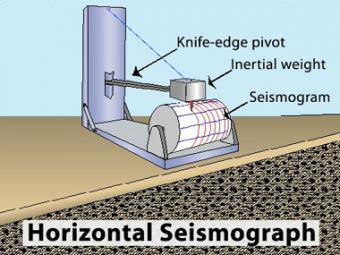
How does a seismometer measure horizontal ground motion?
Animation of the principles of a drum-style horizontal seismograph station that records back- and-forth (N–S, E–W) movement. The suspended mass remains at rest as the spring and pivoting knife absorb most of the motion during an earthquake. The instrument shifts back and forth due to the oblique travel direction of the P wave and the shearing movement of the S wave. The stylus (pen) affixed to the mass, records the relative motion between itself and the rest of the instrument, thus recording the ground motion.
Click "Animations" tab above to see a Vertical Seismograph animated

Animation of the principles of a drum-style vertical seismograph station that records up-and-down movement.
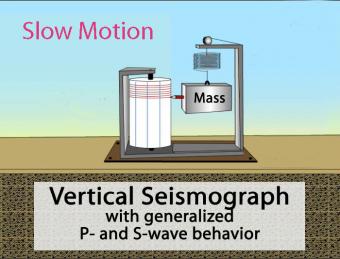
Animation of the principles of a drum-style vertical seismograph station that records up-and-down movement.
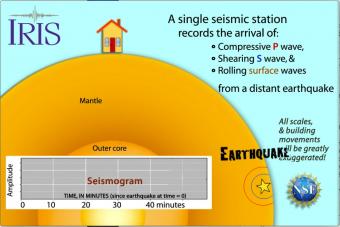
Seismic waves travel through the earth to a single seismic station. Scale and movement of the seismic station are greatly exaggerated to depict the relative motion recorded by the seismogram as P, S, and surface waves arrive.
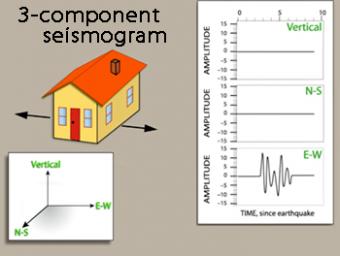
We use exaggerated motion of a building (seismic station) to show how the ground moves during an earthquake, and why it is important to measure seismic waves using 3 components: vertical, N-S, and E-W. Before showing an actual distant earthquake, we break down the three axes of movement to clarify the 3 seismograms.
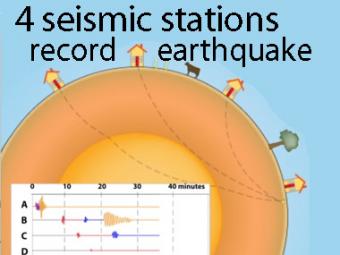
A cow and a tree in this narrated cartoon for fun and to emphasize that seismic waves traveling away from an earthquake occur everywhere, not just at seismic stations A, B, C, and D. A person would feel a large earthquake only at station A near the epicenter. Stations B, C, D, and the cow are too far from the earthquake to feel the seismic waves though sensitive equipment records their arrival.

A gridded sphere is used to show a single station recording five equidistant earthquakes.
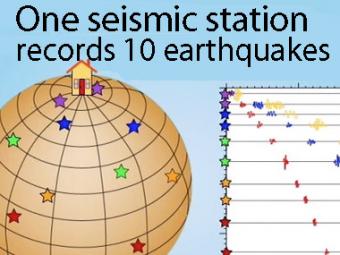
A gridded sphere is used to show:
1) the seismic stations don't need to be lined up longitudinally to create travel-time curves,
as they appear in the first animation, and
2) a single station records widely separated earthquakes that plot on the travel-time curves.
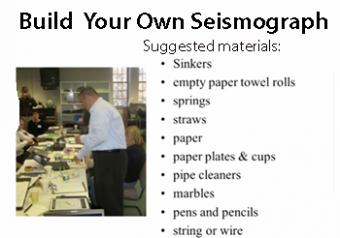
Working in small groups of 3-4, students design and construct a seismograph using common household and craft materials provided. Students will demonstrate to the class (by shaking their table) how their seismographs records ground motion and if possible, the time of the disturbance occured.
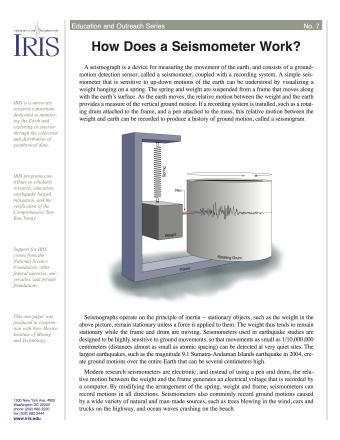
A seismograph is a device for measuring the movement of the earth, and consists of a ground-motion detection sensor, called a seismometer, coupled with a recording system. This fact sheet provides an overview of the basic components of a seismometer and physical science principles behind its operation.
NOTE: Out of Stock; self-printing only.
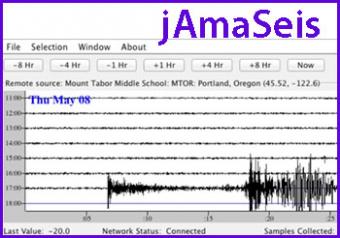
jAmaSeis is a free, java-based program that allows users to obtain and display seismic data in real-time from either a local instrument or from remote stations.